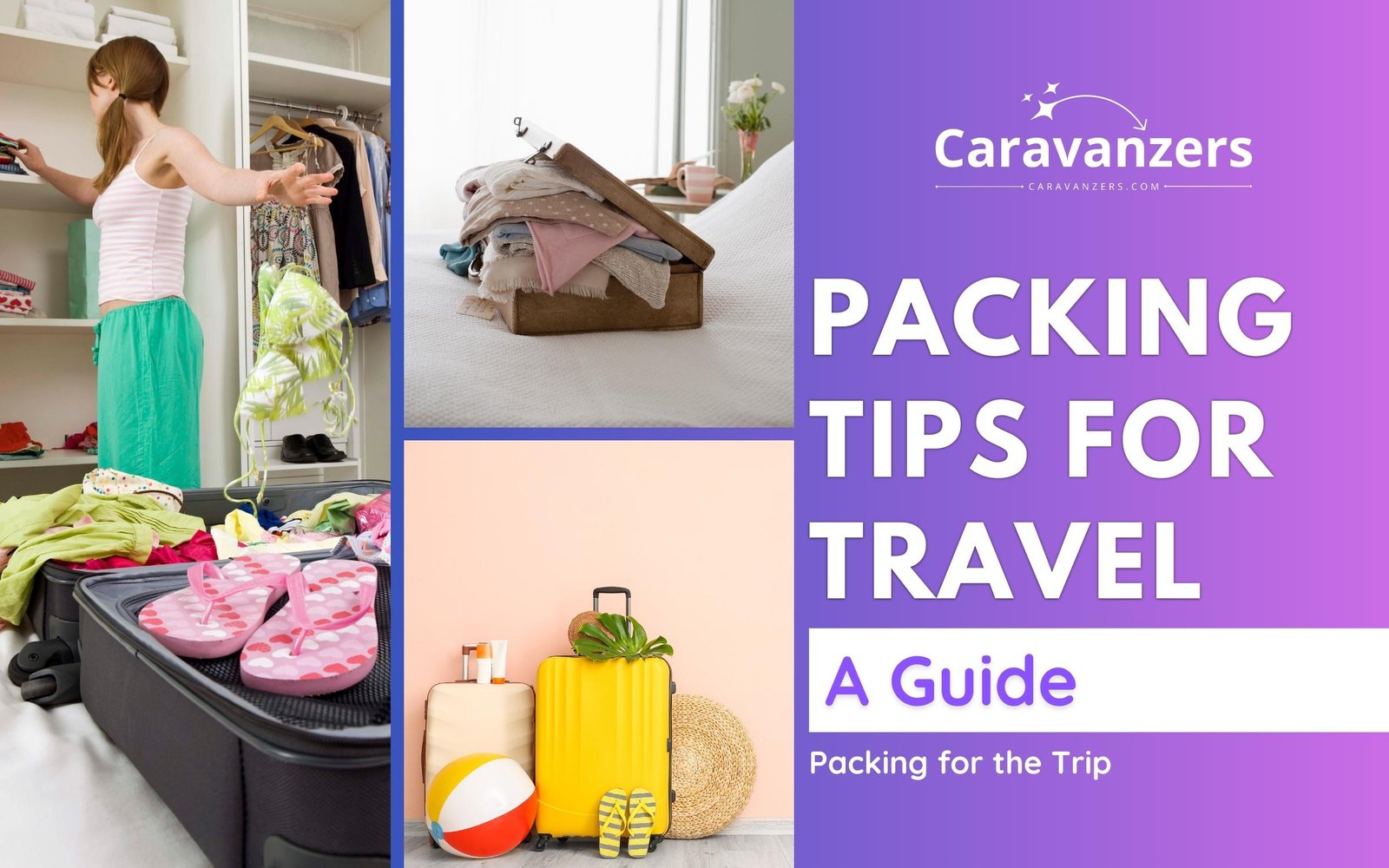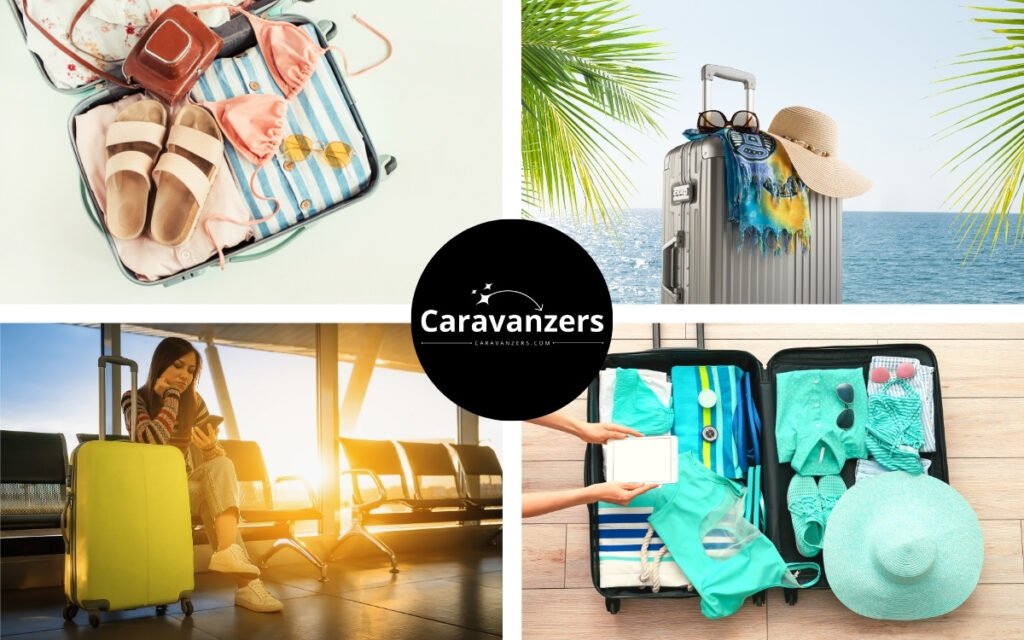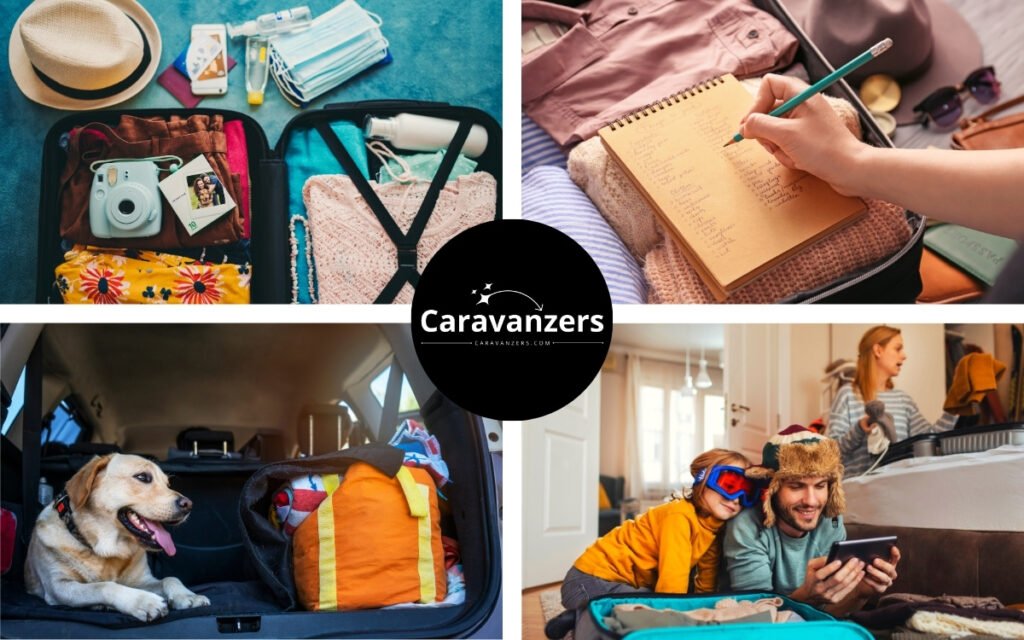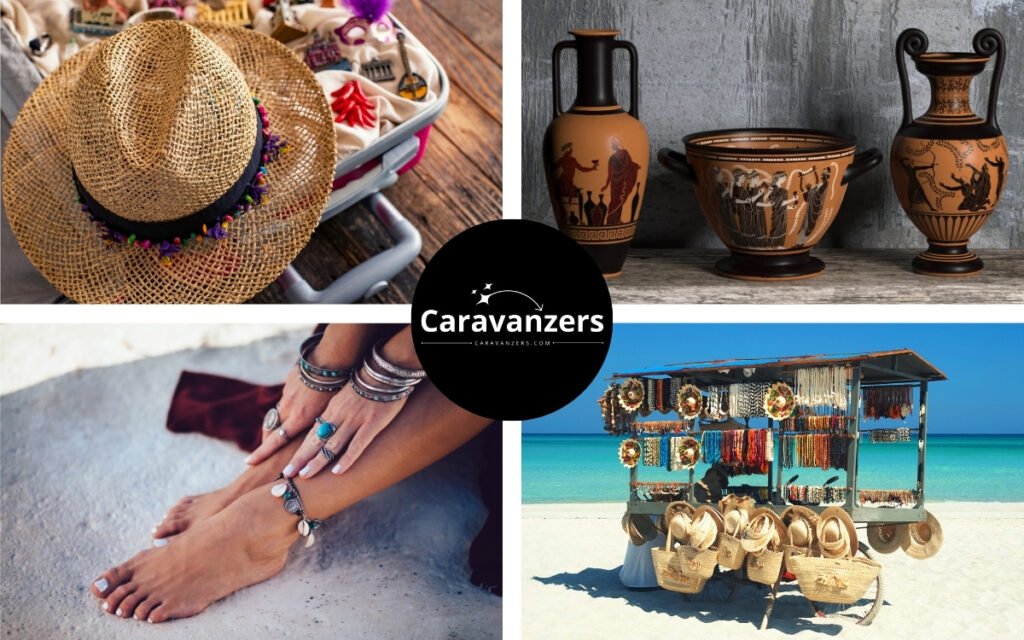
Packing tips for travel. This guide shows how efficient packing is a crucial aspect of ensuring a successful and enjoyable travel experience.
By thoughtfully organizing our belongings, we can significantly reduce stress and streamline our journey.
In this guide, I will explore the significance of packing wisely and how it contributes to a smooth travel experience.
So, throughout this article, I will dive into essential packing tips for different types of trips.
From choosing the most versatile clothing to packing travel-friendly toiletries and electronics, my aim is to offer comprehensive guidance on optimizing luggage space.
By following the advice in this guide, I hope that you will be able to pack smartly, relish your travel experiences to the fullest, and create lasting memories wherever your adventures may take you.
Packing Tips for Travel Overview

Travel is such a strange thing, bud did you know there’s such a thing as chronic overpacking syndrome?
I’m guilty of overpacking, and trust me, nothing ‘weighs you down’ more than overpacking.
We tend to pack so much due to a fear of being unprepared or missing essential items.
Likewise, the desire for comfort and familiarity during our travels leads to overpacking.
Similarly, lack of time for planning and difficulty in making decisions on what to leave behind can also contribute to excess baggage.
These days, I have some rules.
For a short trip of 1 week, a small to medium-sized carry-on suitcase or a weekender bag is best.
So, these suitcases are compact, lightweight, and easy to maneuver.
This allows you to pack efficiently and avoid the need to check luggage, saving time and potential hassles during your trip.
On the other hand, for a trip of 2 weeks, a medium-sized checked suitcase or a large wheeled duffel bag is ideal.
These suitcases provide enough space to accommodate clothing and essentials for an extended stay.
Opt for durable and well-organized options to make packing and accessing items more convenient during your trip.
Finally, for a longer trip of 3 weeks, a large checked suitcase or an expandable rolling suitcase is the best choice.
These suitcases offer ample space to accommodate clothing, accessories, and other essentials for an extended stay.
So, look for sturdy and well-designed options to withstand the demands of longer travel durations.
Before you run off, make sure to have travel insurance for your trip!
Now, for the rest of the guide, I will focus on other areas more specifically.
Trip Assessment
So, before going on any trip, it is essential to assess your destination and duration to make informed packing decisions.
This is one of my favorite packing tips for travel.
For example, if you’re going to Paris, you need to know a few things.
Understanding the climate and weather conditions of the place you’re visiting is paramount.
Pack accordingly with appropriate clothing and accessories to stay comfortable throughout your stay.
Another crucial factor is determining the duration of your trip and the activities you have planned.
Short weekend getaways may require a different packing strategy than extended vacations.
Consider the range of activities you’ll be engaging in, from casual sightseeing to formal events, and pack versatile outfits that suit each occasion.
Equally important is choosing the right luggage for your travel needs.
A well-suited suitcase or backpack can make a significant difference in your overall travel experience.
If you plan to move around frequently, opt for lightweight and easy-to-carry luggage.
For longer trips, consider spacious options with ample compartments for organized packing.
By taking these factors into account during the packing process, you can ensure that you have everything you need while keeping your luggage manageable and convenient.
So, being prepared for the destination’s conditions and tailoring your packing to the trip’s duration and activities will contribute to a smoother, stress-free travel experience.
Make a Packing Checklist
A packing checklist is an invaluable tool to ensure you don’t forget any essential items while avoiding unnecessary baggage.
So, to start, create a comprehensive checklist that covers all the necessities for your trip.
For example, maybe you’re going on a solo adventure.
This should include clothing, toiletries, electronics, travel documents, and any other specific items required for your destination or activities.
To further organize your checklist, divide items into three categories: essential, optional, and luxury.
Essential items are must-haves for your trip, such as travel documents, medications, and appropriate clothing for the weather.
Optional items are those that enhance your experience but can be omitted if space is limited, like extra gadgets or non-essential accessories.
Luxury items are treats that add comfort and enjoyment, such as a favorite book or travel pillow.
Customize your packing checklist according to your personal preferences and needs.
Consider your unique habits, style, and any specific requirements based on your destination or travel purpose.
This ensures your checklist reflects your individuality and guarantees you have everything you need for a personalized and enjoyable trip.
So, remember to review and revise your checklist periodically, especially as your travel needs might change.
Packing for Clothing

When it comes to packing clothing and accessories for your travels, strategic choices can make all the difference in ensuring you have a well-prepared and efficient wardrobe.
Firstly, opt for versatile clothing that can adapt to various occasions, saving you space and time.
Honestly, this is one of the great packing tips for travel.
For instance, think about going to exotic places like Hawaii for the first time.
Choose pieces that are easily dressed up or down, and consider fabrics that are wrinkle-resistant and quick-drying, perfect for on-the-go adventures.
To maximize your outfit options, focus on mix-and-match pieces.
By selecting clothing items that can be paired in different combinations, you can create multiple looks with fewer items.
This approach not only saves space in your luggage but also allows you to create varied and stylish ensembles throughout your trip.
Efficiently organizing your clothes within your luggage is essential.
Instead of folding, try rolling your garments, which minimizes wrinkles and optimizes packing space.
Additionally, packing cubes or compression bags can help keep your clothing neat and easily accessible.
Meanwhile, when it comes to footwear, be mindful of your planned activities and pack accordingly.
Bring versatile shoes that can accommodate various settings and match your outfits.
A comfortable and practical pair for walking, combined with something more dressy for formal occasions, will cover most bases.
Lastly, don’t forget to pack accessories that add both functionality and style to your outfits.
A statement necklace, a scarf, or a versatile bag can transform a basic look and provide added utility during your travels.
So, by carefully selecting clothing and accessories that align with these guidelines, you can pack smartly, travel light, and look fabulous throughout your journey.
Toiletries and Medications
When preparing toiletries and medications for your travels, a few considerations can greatly enhance your journey’s convenience and safety.
This is especially important if you’re going on an illness-prone trip like a safari.
Opt for travel-sized toiletries and containers to save space in your luggage.
Many essential personal care items are available in compact versions, or you can transfer larger products into smaller containers.
This not only reduces bulk but also complies with airline restrictions on liquid volumes.
Ensure you pack a basic first-aid kit for unexpected emergencies.
Include items like adhesive bandages, antiseptic wipes, pain relievers, and any prescription medications you require.
Having a well-stocked kit can offer peace of mind and immediate aid for minor injuries or health issues while on the go.
Follow TSA regulations regarding liquids and medications when traveling by air.
Place your travel-sized toiletries in a clear, resealable bag, and make sure they adhere to the allowed volume limits.
For medications, carry them in their original packaging and carry copies of prescriptions or doctor’s notes, particularly for controlled substances.
So, by incorporating these travel-friendly strategies for toiletries and medications, you can streamline your packing process, stay prepared for unexpected situations, and smoothly navigate security checks during your journey.
A well-prepared toiletries and medication kit ensures that your travel experience remains stress-free and enjoyable.
Electronics and Gadgets
When it comes to organizing electronics and gadgets for travel, careful planning is essential to keep your devices safe and your luggage clutter-free.
First and foremost, prioritize securing and protecting your electronic devices.
So, here is another favorite packing tips for travel in this day and age.
Think about heading to a dive trip. Wouldn’t you want that camera to be spotless?
Invest in a quality, padded case or sleeve to shield items like laptops, tablets, and cameras from potential damage during transit.
Additionally, consider carrying a waterproof cover or pouch for protection against unexpected weather conditions.
Pack chargers, power banks, and adapters with care to ensure your devices remain powered throughout your journey.
Use cable organizers or small pouches to keep cords tidy and prevent tangling.
Consider bringing a universal adapter that can accommodate different plug types, ensuring you can charge your devices in various countries.
Minimize electronic clutter and cords by assessing your actual needs for each device.
Avoid bringing redundant gadgets and only pack what you genuinely require.
Consider multi-functional devices, such as a smartphone with a good camera, to reduce the number of separate gadgets you need to carry.
So, by thoughtfully organizing your electronics and gadgets, you can safeguard your devices, maintain their functionality throughout your trip, and reduce the hassle of dealing with tangled cords.
A well-managed electronic setup allows you to focus on enjoying your travel experience with peace of mind.
Documents and Money
When it comes to important documents and money, safeguarding these essentials is crucial for a smooth and worry-free travel experience.
For example, let’s say you’re going to India and have your visa. You don’t want to lose this.
Start by organizing your travel documents, such as your passport, visas, identification cards, and travel itineraries, in a secure and easily accessible folder or pouch.
Keep them together in one place to avoid misplacing any critical paperwork during your journey.
Create digital copies and backups of essential documents.
Scan or photograph your important papers and store them securely in a password-protected cloud storage service or email them to yourself.
This way, you can access your documents from any device in case of loss or theft.
Carry money securely by using a combination of cash, credit/debit cards, and travel cards.
Avoid carrying large sums of cash and spread your money across different compartments, such as a money belt or hidden pockets.
Inform your bank about your travel plans to prevent any issues with card usage abroad.
When managing foreign currency, research and plan ahead to get the best exchange rates.
Avoid exchanging money at airports or tourist-heavy areas, as they often charge higher fees.
Consider using ATMs to withdraw local currency as needed, and be mindful of any foreign transaction fees.
So, by organizing your important documents and money safely and being prepared to manage currency abroad, you can focus on enjoying your journey with confidence and peace of mind.
Packing for Types of Trips

When packing for specific types of trips, tailoring your luggage to match the unique demands of each adventure is vital for a successful and enjoyable experience.
For beach vacations, focus on essentials for sun, sand, and sea.
Pack lightweight and breathable clothing, swimsuits, flip-flops, and a wide-brimmed hat for sun protection.
Don’t forget sunscreen, a beach towel, and a beach bag to carry your belongings comfortably.
Consider bringing a portable cooler and a reusable water bottle to stay hydrated.
Adventure trips call for the right gear and equipment.
Research the specific activities you’ll be undertaking and pack accordingly.
For hiking trips, pack sturdy footwear, moisture-wicking clothing, and a backpack with essentials like a first-aid kit and a map.
Water-resistant and quick-drying items are ideal for water-based activities like kayaking or rafting.
Meanwhile, business travel requires maintaining a professional appearance on the go.
Pack a mix of business attire that can be mixed and matched for different meetings and events.
Wrinkle-resistant clothing and accessories that add versatility to your outfits are essential.
Don’t forget to pack your laptop, chargers, and any presentation materials you may need.
So, yeah, that will help you to plan any type of travel.
Tips for Efficient Packing
Efficient packing can significantly enhance your travel experience by maximizing space and minimizing wrinkles.
Here are some tips to help you pack efficiently.
Consider the pros and cons of rolling versus
folding clothes.
Rolling can save space and reduce wrinkles, making it ideal for casual and wrinkle-resistant fabrics.
However, folding may be better for dressier clothing or items prone to creasing.
A combination of both techniques can work best for various clothing types.
Utilize packing cubes and compression bags to optimize space.
Packing cubes help compartmentalize items, making it easier to find what you need.
Compression bags, on the other hand, can compress clothing and remove excess air, reducing the overall volume of your luggage.
To avoid wrinkles and creases, pack delicate items with care.
Place tissue paper or plastic bags between layers of clothing to reduce friction.
Rolling clothes instead of folding can also help prevent creases.
Consider carrying a portable fabric steamer or wrinkle-release spray for on-the-go touch-ups.
So, by mastering these efficient packing techniques, you can save space, reduce the need for excessive luggage, and keep your clothes looking fresh and neat throughout your journey.
A well-organized suitcase leads to a stress-free and enjoyable travel experience.
Souvenirs and Shopping

Managing souvenirs and shopping during your travels requires careful planning to ensure you can bring back cherished mementos without exceeding luggage limits or encountering customs issues.
Leave ample space in your luggage for souvenirs.
Be mindful of the size and weight of potential purchases.
Consider packing collapsible bags or bringing an extra foldable duffel to accommodate any additional items you might acquire during your trip.
To avoid overloading your luggage, consider shipping or mailing items back home.
Research local shipping services or inquire at your accommodation about mailing packages.
This option is particularly useful for large or fragile souvenirs.
Before purchasing souvenirs, be aware of customs regulations and restrictions for bringing items back home.
Some countries have restrictions on specific items, such as food, plants, or cultural artifacts.
Familiarize yourself with the customs rules of both your destination and home country to avoid any issues upon return.
So, by planning ahead and being mindful of luggage space, shipping options, and customs regulations, you can enjoy collecting souvenirs and shopping while ensuring a smooth and compliant return journey.
Thoughtful management of souvenirs allows you to preserve cherished memories of your travels without compromising the ease of your trip.
What Not to Pack
What would a packing tips for travel be without telling you what to ditch, am I right?
Knowing what not to pack is just as important as knowing what to pack, as it can help reduce luggage weight and prevent potential issues during your travels.
Avoid packing unnecessary items that add weight and take up valuable space in your luggage.
Consider leaving behind items you can easily purchase at your destination, such as toiletries or items that are readily available at your accommodation, like towels and hairdryers.
Minimize the number of shoes and accessories to save space.
Be aware of prohibited items and substances to ensure compliance with travel regulations and avoid any legal troubles.
Prohibited items can include sharp objects, firearms, flammable materials, and certain food items.
Familiarize yourself with both your departure and destination country’s rules to prevent any problems at security checkpoints or customs.
So, by refraining from packing unnecessary items and staying informed about prohibited items and substances, you can streamline your packing process and travel with peace of mind.
Traveling light and adhering to regulations will contribute to a smoother and more enjoyable journey.
Final Thoughts – Packing Tips for Travel
We are at the end of my packing tips for travel.
Throughout this guide, I have shown you how efficient packing was a crucial aspect of ensuring a successful and enjoyable travel experience.
By thoughtfully organizing our belongings, we were able to significantly reduce stress and streamline our journey.
I explored the significance of packing wisely and how it contributed to a smooth travel experience.
Throughout the article, I dived into essential packing tips for different types of trips, from choosing versatile clothing to packing travel-friendly toiletries and electronics.
My aim was to offer comprehensive guidance on optimizing luggage space.
So, by following the advice in this guide, I hope that you were able to pack smartly, relish your travel experiences to the fullest, and create lasting memories wherever your adventures took you.
Happy travels!
Lena Wilson writes about fashion, beauty, and more for Caravanzers.
Follow us on Pinterest.

3 Comments
Comments are closed.